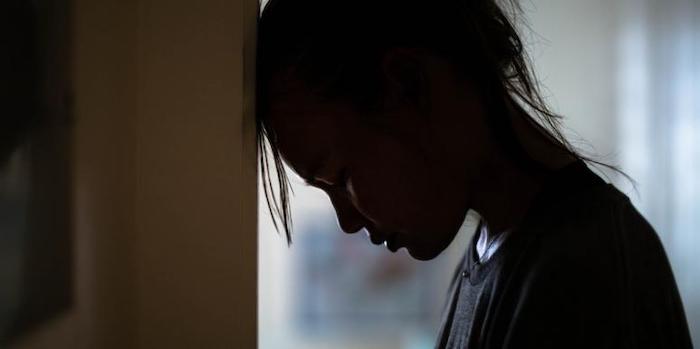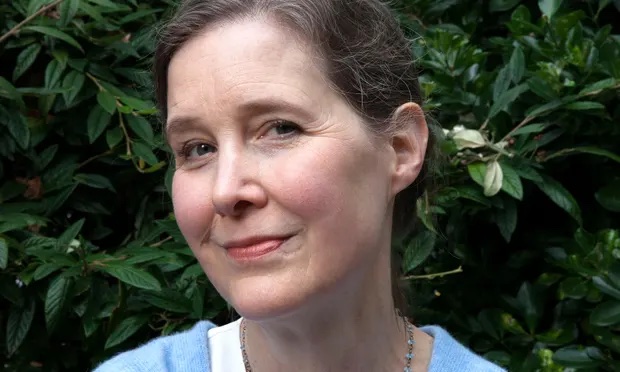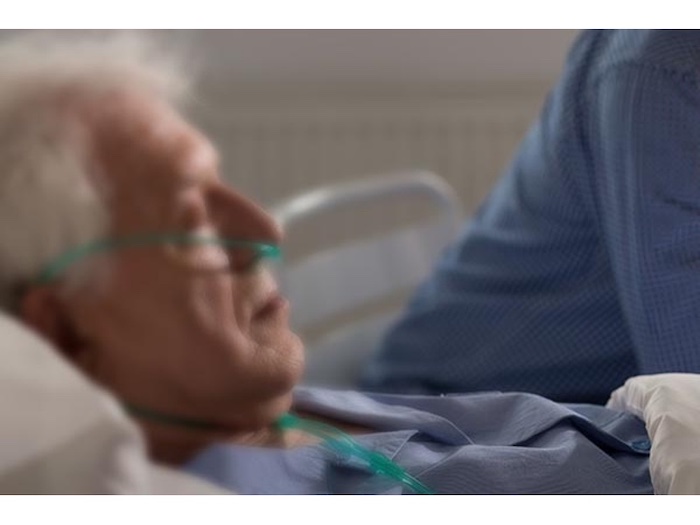—Here’s How Others Got Through It

This season, day-to-day life is still upended by the pandemic, and so many of us are struggling with loss. You can’t outwit sadness with holiday cheer, but meeting grief head-on and embracing it can help.
By Meghan Rabbitt
The overwhelming sadness came out of nowhere and in the most inconvenient place: in front of a big display of antibacterial wipes at Target. Bernadette Nally was picking up a few last-minute Christmas gifts last year when she saw the wipes and began to choke back tears.
“My cousin, who I’d been taking care of for 15 years after she had a stroke and was placed in a nursing home, always asked me to bring her boxes of those wipes when I’d visit,” the 67-year-old from Long Island, New York, tells Health. “Seeing the display that day reminded me that I’d never need to buy them for Mary Amelia again. And it brought up a lot of sadness that I had to say goodbye to her via a FaceTime call rather than in person, a few days after she was admitted to the hospital with COVID-19.”
While Nally says she grieved the death of her cousin back in April 2020, she admits she also did a lot of justifying. She told herself that Mary Amelia’s quality of life wasn’t all that great considering the various ailments she was dealing with, and she assuaged her guilt about not having a wake and funeral mass, given the fact that the world was in the throes of a global pandemic.
Yet now, nearly two years after her cousin’s death, the sadness about all of these things tends to bubble to the surface when Nally least expects it—especially now that the holidays are here.
“I find myself flashing back to the last phone call with my cousin after she’d tested positive, when she told me how scared she was,” recalls Nally. “Then I think about the video call with the nurse who used her own iPhone to FaceTime me so I could see Mary Amelia and say goodbye. It can be pretty overwhelming when these memories come to me during a time when all of us are supposed to be so grateful and happy.”
Why grief feels so hard this holiday season
While coping with grief is always a day-to-day challenge, it can pose a bigger challenge in November and December when the holidays arrive. That’s especially true this holiday season, when many of us, like Nally, are still reeling from loss we experienced due to the pandemic.
“If you’ve lost a loved one to COVID-19, you’re adjusting to a new way of life without that person—and the holiday season, which tends to be centered around our loved ones, will likely remind you of that loss,” Cassandra Godzik, associate dean and professor at the School of Nursing at Regis College, tells Health. Godzik is a practicing psychiatric mental health nurse practitioner whose work involves patients who are experiencing loss, grief, and bereavement.
“Even if you haven’t lost someone to COVID-19, all of our lives have been impacted in some way by the pandemic—whether you lost a job, took a pay cut, or you’ve had to compromise on your previous way of life in some way,” Godzik explains. “It’s all loss, which can feel especially difficult right now.”
That’s because in western culture, there’s a strong imprint about what the holidays should and should not look like, Merryl Rothaus, LPC, a licensed professional counselor and board-certified art therapist in Boulder, Colorado, who specializes in grief, loss, and trauma, tells Health. “We’re conditioned to believe this season should be happy, cozy, and joyful. So if we’re not feeling these things, we tend to think, There must be something wrong with me. And that tends to make grief feel even stronger.” This type of thinking can also result in a cascade of shame and lead to isolation, adds Rothaus, as well as other mental health conditions such as depression or anxiety.
Then there’s the nature of grief itself, which doesn’t follow a tidy schedule and can’t be outwitted with holiday cheer. Miami-based Amy Stone, 47, discovered this the hard way the Christmas after her dad died of a sudden heart attack. As a mom of two, she ignored her own sadness in an effort to make the holiday extra meaningful for her family. But when Christmas rolled around, she was too cranky to celebrate. “I realized that by throwing myself into planning the holiday and going above and beyond to make it special, I was really just trying to outrun my grief,” Stone tells Health. “And as I found out, that’s an impossible feat.”
Jill Dawson, LPC, a licensed professional counselor whose mom died six months ago from ALS, tells Health that the first holiday without a loved one can feel particularly challenging. “In general, humans don’t like change,” she explains. “In fact, most of us work really hard to avoid it because of all of the uncertainty that accompanies it. When someone dies, we’re thrust into needing to change—and that process is really uncomfortable.”
Dawson can relate to this on a personal note, as she navigates how the holidays will look without her mom for the first time this year. “Right now, my grief feels non-stop with little bouts of reprieve,” she says. “I’m already feeling under-resourced, and I know this first Christmas and New Year’s without my mom will force me to really feel into the pain of that loss.”
Grief’s “spotlight effect”
Luckily, time tends to act as a salve, softening the sharp edges of grief. But that’s not to say it won’t surface in ways that cut deep. It’s been a decade since Stone’s dad died, and she says her sadness still feels amplified around the holidays. “Every year is a reminder that he isn’t with us to read ‘Twas the Night Before Christmas and to see my kids get older,” she says. “We’ve made new traditions, which are wonderful. But it doesn’t make the sadness of my dad’s absence go away.”
Gina Moffa, LCSW, a New York City-based licensed clinical social worker who specializes in grief therapy, calls this the spotlight effect.
“The holidays tend to shine a spotlight onto everything you don’t have,” Moffa tells Health. “Not everyone is on good terms with their family or there will be someone missing this year. COVID-19 came without warning and changed everything at once, and we’re still dealing with the trauma of that. Add to all of this the societal pressure that the holidays be ‘perfect,’ and it’s a recipe for misery.”
This focus on “perfection” tends to make us long for things we don’t actually want, adds Moffa. “Every year around the holidays, I see those car commercials—you know, the one where the husband buys the wife a fancy SUV and it’s waiting for her in the driveway, presumably on Christmas morning, with a big bow on the hood and a light snow falling gently. And I find myself feeling jealous, even though I would never want that life,” she says. “When you think about it, we put a lot of pressure on ourselves for three days out of the year. And that pressure amplifies our dark, sad moments and losses even more.”
Getting through the season when you’re grappling with loss
So, what’s the answer? A staggering 36% of Americans report that they don’t feel like celebrating the holidays this year, according to a survey conducted by Harris Poll and Experience Camps, a nonprofit focused on coping resources for grieving children. If you fall into that category, how do you go about facing the season?
The truth is, there’s no one way to navigate your grief. But the more options you have for what this season might look like, the more able you’ll be to make space for your grief during a time when the expectation is to be cheerful—something experts agree is key. “Meeting your pain rather than trying to extinguish it isn’t easy, but it is the way through it,” says Rothaus. Here’s a start.
Think of grief as another form of love
One of the reasons grieving during the holidays can be so tricky is because we interrupt our grieving process with some version of “I shouldn’t be crying or feel sad right now,” says Dawson. Yet if there’s a silver lining to grief, it’s that it reminds us of how much love we had for the person we lost, she says.
“The reality is, we don’t grieve things that don’t matter,” she says. “When we’re grieving, it means we loved someone, that they mattered in our lives, and that we deeply miss them.” When you remind yourself of this, it’s easier to reframe feeling sad as a healthy, accurate sign that you loved someone so much, your heart is breaking because they’re no longer here.
After Ivan Maisel’s 21-year-old son, Max, committed suicide in 2015, his recognition that the amount of grief he was experiencing equaled the amount of love he had for his son made complete sense—and took the edge off his pain. “When I thought of my grief as just a different form of love, it helped me understand why I was in pain,” Maisel, the author of a book about coming to terms with his grief called I Keep Trying to Catch His Eye: A Memoir of Loss, Grief, and Love, tells Health. “It helped me learn to carry my grief with me.”
Give yourself permission to cancel the holidays
Just because everyone is telling you this time of year should look and feel a certain way doesn’t mean you have to meet those expectations, especially if they’re unrealistic. When one of Rothaus’ clients experienced the tragic loss of half of her family due to an accident last year, she cancelled Thanksgiving. Instead, she ordered takeout and watched movies all night with her grieving clan. “Did it make their grief go away? No,” says Rothaus. “But did it soften their grief a little? Yes.”
Moffa recommends going into the holiday season with a Plan A and Plan B: Plan A can involve doing what you’d normally do (like celebrating with family and friends), while you can think of Plan B as more of an escape hatch (like going to the movies or spending some quiet time honoring the loved one you’ve lost). “Rather than powering through Plan A, give yourself permission to do something that feels nourishing to you psychologically and emotionally,” she suggests. “Many of my clients find that just knowing plan B is in place makes plan A feel more tolerable.”
Ask yourself, “Have I grieved enough today?”
If you’re planning to carve out space for your grief in a society that doesn’t do this very well and during a time of year that’s supposed to be about joy, make it a daily practice, says Rothaus. It doesn’t have to be anything elaborate. You might bake the same side dish or pie your loved always brought to Thanksgiving dinner or sit in her go-to pew at Christmas mass. “Most of us will feel a pull to move away from grief because we live in a culture that doesn’t value it,” she explains. “But in my experience, turning toward your grief is one of the best ways to move through it.”
Remind yourself that grieving is exhausting; as anyone in the throes of grief will tell you, the big emotions that come along with it will tire you out. Couple that with trouble sleeping, a changed appetite, and the hectic holiday season, and it’s easy to see how you could become seriously depleted. That’s why it’s important to set some boundaries and focus on your own well-being, says Moffa. “When you’re grieving, it’s so important to think about your needs and put them first,” she says.
Maybe that means taking a relaxing bath every night before getting into bed, or making time for a hobby you love that energizes and fulfills you. Ideally, it’ll also mean eating nutritious food, drinking enough water, and getting enough sleep. “During the busy holiday season, it’s easy to forget or forgo our own physical and emotional needs—and the same is true when you’re grieving,” says Moffa. “Yet making sure you’re taking care of yourself is a way to bolster yourself, so you can endure the hard work of grief.”
Remember that grief is universal, and you can lean on others when you feel alone
Even though grieving is an individual process, we aren’t meant to grieve on our own, says Dawson. “There’s a way that the holidays can make us feel isolated and alone,” she says. “If you’re grieving, feeling lonely can make your grief feel even harder.”
With this in mind, it’s helpful to remember that none of us escape grief, says Rothaus. “You can’t be in human form without experiencing it,” she says, “whether it’s the loss of a loved one, the loss of a dream, or the loss of a lifestyle.” Given all of the ways COVID-19 has changed life as we know it, people all around the world are grieving in some way. The point of recognizing this collective pain isn’t to wish suffering on others, but rather to remind yourself that you’re not alone in your grief. It can help you feel connected—and inspire you to get in touch with people who can support you as you grieve, adds Dawson.
“One of the best things you can do if you are grieving is to connect with people who love you—which, when you think about it, is something we all tend to do this time of year,” she says. “Reach out to a family member or a friend, not necessarily to talk about your grief but to simply be with other people. Lean on the support of a church community or therapist. Spending time with people who love and support you can feel like a healing balm that bolsters you through the holiday season and beyond.
Complete Article ↪HERE↩!









